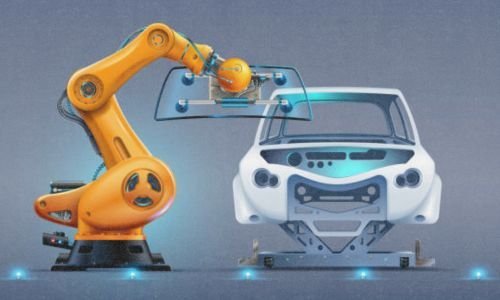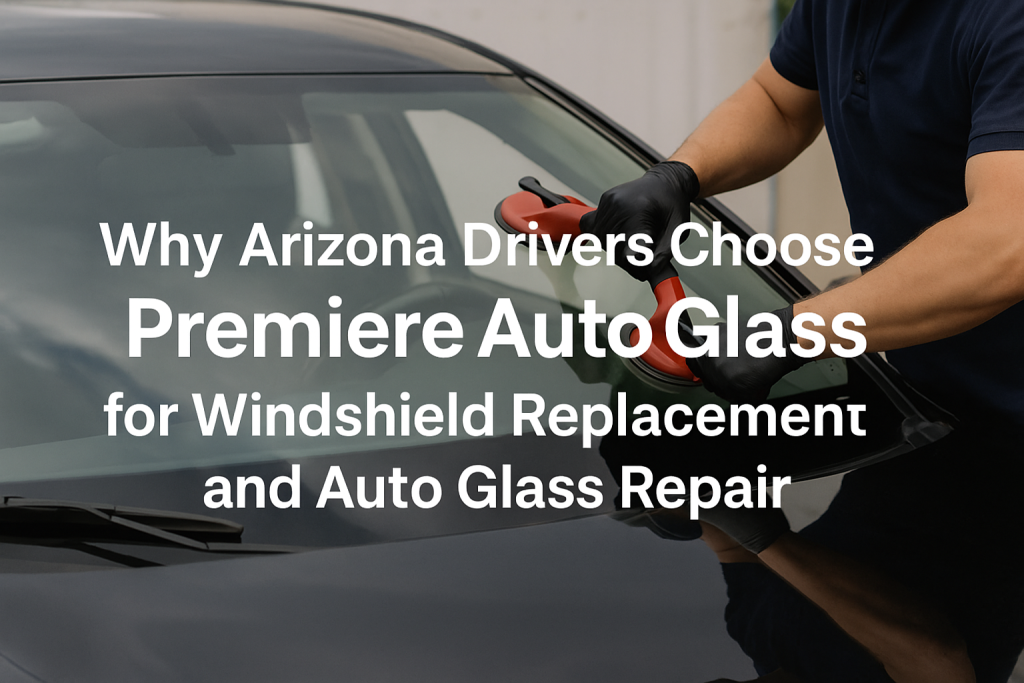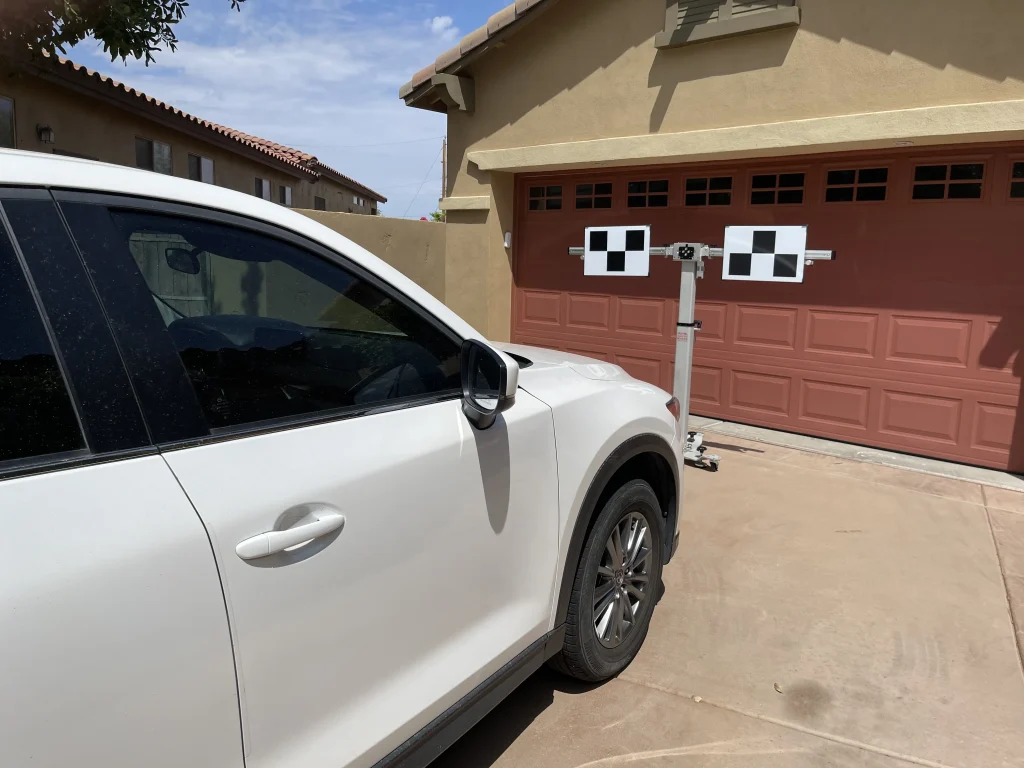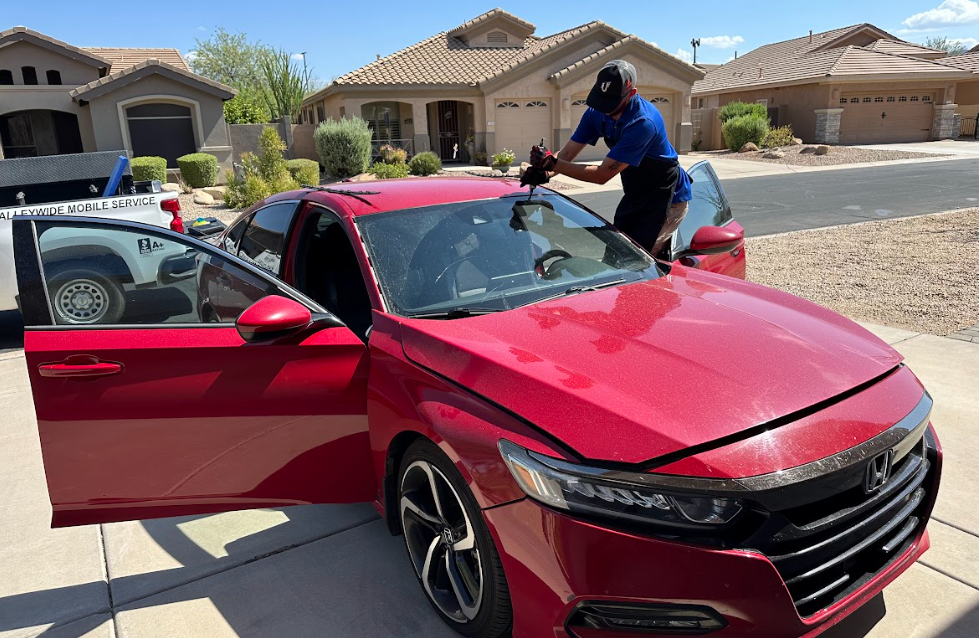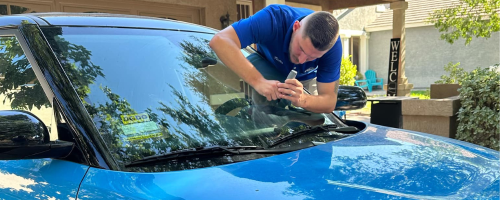The humble car window has progressed from rudimentary shields to high-tech safety hubs. A relentless pursuit of driver safety and comfort has driven the evolution of auto glass technology, a fascinating story of innovation. Buckle up as we explore the key milestones and exciting advancements in this ever-evolving field.
From Shattering Shards to Safe Havens: Evolution of Auto Glass Technology
The early days of motoring were far from idyllic. While offering visibility, glass posed a significant danger. Brittle and prone to shattering into sharp fragments, it was more of a liability than a protector. Enter laminated glass, a revolutionary invention that changed the game. By sandwiching a thin layer of plastic (Polyvinyl Butyral, or PVB) between two sheets of glass, laminated glass offered several advantages:
-
Shatter resistance:
Upon impact, the PVB layer held the glass fragments together, preventing the dangerous shower of shards. This greatly improved the safety of vehicles and reduced the risk of injury to occupants. Also, laminated glass provided better sound insulation and UV protection, making for a more comfortable driving experience.
-
Improved occupant safety:
In accidents, the PVB layer helped contain passengers within the vehicle, minimizing injury risk. Furthermore, laminated glass could withstand extreme weather conditions, such as strong winds and hailstorms, without shattering. This made it particularly suitable for vehicles operating in areas prone to severe weather events.
-
Reduced UV exposure:
The PVB layer could be treated to block harmful ultraviolet rays, protecting drivers and passengers from sun damage. The laminated glass also provided sound insulation, reducing external noise and creating a quieter environment inside the vehicle. Moreover, the UV protection offered by the treated PVB layer helped prevent fading and damage to the interior upholstery and dashboard, prolonging the lifespan of the vehicle’s internal components.
Laminated glass became the standard for windshields in the 1930s, marking a turning point in auto safety. But the journey didn’t stop there.
In the US alone, over 2 million people are injured by broken glass in car accidents every year.
Tempered Glass Takes the Side Stage: Evolution of Auto Glass Technology
While laminated glass proved its mettle at the front, the side and rear windows needed a different approach. Tempered glass, a type of glass treated with heat and rapid cooling, offered a new level of protection:
-
Controlled fragmentation:
Upon impact, tempered glass shattered into small, blunt pieces, significantly reducing the risk of cuts and lacerations. In addition to its controlled fragmentation, tempered glass also provided increased strength and resistance to impact compared to laminated glass. This made it ideal for side and rear windows, with a higher risk of breakage from side collisions or objects hitting the glass.
-
Increased strength:
Tempered glass was more resistant to bending and breaking than regular glass, offering better protection against impacts and projectiles. In a collision, tempered glass was less likely to shatter completely, providing a protective barrier and preventing occupants from being ejected from the vehicle. This enhanced safety feature made it a preferred choice for automotive manufacturers and contributed to the overall durability of the vehicle’s structure.
The introduction of tempered glass in the 1950s fortified the safety shield surrounding car occupants. However, the thirst for innovation continued to drive advancements.
The global market for automotive glass is expected to reach $38.2 billion by 2025.
Beyond Safety: Auto Glass Becomes a Multifaceted Marvel (Evolution of Auto Glass Technology)
Modern auto glass technology is far from just a safety feature. It’s a canvas for innovation, offering comfort, convenience, and even entertainment:
-
Heated windshields:
Melt away winter frost and ensure clear visibility in cold climates. In addition, some auto glass now comes equipped with built-in sensors that can detect rain and automatically activate windshield wipers, providing convenience and improving driver visibility during inclement weather. Furthermore, advancements in technology have allowed for integrating heads-up displays onto windshields, providing drivers with important information such as speed and navigation directions without taking their eyes off the road.
-
Rain-repellent coatings:
Enhance driving visibility in wet conditions by repelling water droplets. These coatings are typically applied to the windshield and can improve driver safety by constantly reducing the need for windshield wipers. Additionally, rain-repellent coatings can help prevent ice formation on the windshield in freezing temperatures, further enhancing visibility in cold climates.
-
Tinted windows:
Block out harmful UV rays and reduce solar heat gain for a cooler cabin. Tinted windows also provide privacy for passengers and can help reduce glare from the sun, improving overall comfort and safety while driving. Additionally, they can protect the vehicle’s interior from fading and damage caused by prolonged exposure to sunlight.
-
Heads-up displays (HUDs):
Project vital driving information onto the windshield, minimizing distractions. HUDs can display information such as speed, navigation directions, and warnings, allowing drivers to keep their eyes on the road. This technology can also enhance situational awareness by providing real-time updates on road conditions and potential hazards.
-
Advanced driver-assistance systems (ADAS):
Integrate sensors and cameras within the windshield for features like lane departure warning and automatic emergency braking. These systems use the windshield to gather data and provide immediate feedback to the driver, helping prevent accidents and improve overall safety. Additionally, ADAS can also analyze the driver’s behaviour and provide feedback on their driving habits, encouraging safer practices on the road.
70% of new cars sold in the US have heated windshields.
These functionalities transform auto glass from a passive safety feature into an active participant in the driving experience.
The Future of Auto Glass: Evolution of Auto Glass Technology
The evolution of auto glass technology shows no signs of slowing down. The future promises even more exciting advancements:
-
Self-healing glass:
Nanotechnology could enable glass to repair minor scratches and cracks automatically. This would not only improve the aesthetics of the vehicle but also save costs on frequent glass replacements. Moreover, advancements in augmented reality could allow auto glass to display real-time information such as navigation, speed limits, and potential hazards, enhancing the overall driving experience and safety.
-
Variable-tint glass:
Adjusts tint electronically to optimize light and heat control based on weather and driver preference. Other potential advancements include augmented reality windshields, which could overlay navigation and additional helpful information directly onto the glass, enhancing the driving experience. Additionally, there is ongoing research into smart glass that can change transparency at the touch of a button, offering privacy and sun protection when needed.
-
Fully integrated displays:
Windshields could become interactive touch screens, displaying maps, navigation, and entertainment options. These advancements in windshield technology have the potential to revolutionize the driving experience, providing drivers with a seamless and convenient way to access information and entertainment while on the road. Furthermore, integrating these displays into windshields could also enhance safety by reducing the need for drivers to look away from the road to interact with separate devices.
Developing self-healing glass could create a $4 billion market by 2030.
These innovations can further revolutionize the driving experience, making cars safer, more comfortable, and more technologically advanced.
Conclusion: Evolution of Auto Glass Technology and a Brighter Future
From humble beginnings to a high-tech marvel, the evolution of auto glass technology is a testament to human ingenuity and a commitment to safety and comfort. As we continue to innovate, we can look forward to a future where our car windows are not just passive barriers but active partners in creating a safer, more enjoyable journey for everyone on the road.
FAQs about the Evolution of Auto Glass Technology:
Q1: What was the biggest safety leap in auto glass technology?
The invention of laminated glass in the 1930s dramatically reduced the risk of injury from shattered glass shards.
Q2: What’s the difference between tempered and laminated glass?
Laminated glass stays together in a web-like structure upon impact, reducing the risk of flying fragments, while tempered glass shatters into small, blunt pieces, minimizing cuts and lacerations. Both are used in different areas of a car for optimal safety.
Q3: What are some of the non-safety features of modern auto glass?
Heated windshields, rain-repellent coatings, tinted windows, heads-up displays, and even integrated sensors for driver assistance systems.
Q4: What are some future possibilities for auto glass technology?
Self-healing glass, variable-tint features, and fully integrated displays are exciting possibilities.
Q5: How much safer are cars today than those with older glass technology?
Statistics show a dramatic decrease in occupant injuries thanks to advancements in auto glass. For example, in the US, fatal head injuries from car accidents have been reduced by over 60% since the introduction of laminated windshields.
Read More:
Understanding the Role of Auto Glass in Vehicle Safety


